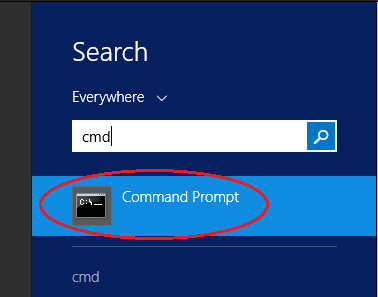

- #HOW TO RDP TO SERVER 2012 HOW TO#
- #HOW TO RDP TO SERVER 2012 UPDATE#
- #HOW TO RDP TO SERVER 2012 WINDOWS 7#
I also set compatibility to cert server 2016, clients Win8/2012R2, and crypto ECDH_P256. Finally, after seeing your post and a bit more digging and failures, I followed your original instructions again, this time with a new template name, no autoenroll, and much higher expiry/renewal periods. Even though I followed your instructions on that second template I continued to have the multiple enrollments. I then had issues so I simply deleted the template, re-sync’ed AD, then created a new template but used the *same* template name as the deleted template and set autorenew off with the same expiry/renewal time as the deleted template. Then during testing I set validity time to 6 hrs with 2 hr renewal window to test autorenewal and cleanup of expired/revoked certs. First thing, my original template did have autoenroll enabled. Sadly I made multiple changes in one shot so I’m not sure which was of my goofs were causing this behavior. Thanks for the quick response! I resolved the issue.

Thank you again from the question, and I will do a better job of responding quicker in the future.

#HOW TO RDP TO SERVER 2012 WINDOWS 7#
(Available after compatibility for recipients of Windows 7 / Server 2008R2 or later) Lastly, we need to make sure the designated servers have both enroll and auto-enroll configured, so the renewals are automated. We would also want to make sure the template is configured to Use subject information from existing certificates for auto-enrollment renewal request. The custom names and SAN(s) from both private and public NIC(s) can be added.

In these cases, the only option is to have a separate template that allows a subject supplied in request. The option of building the subject from AD is not able to get everything needed into the certificate. The problem you mention you are seeing with your servers RDP certificates is like those I see with other clients custom Domain controller or Webserver certificates. Thank you for your question and apologies for the delay in my response. When the GPO refresh applies to targeted servers they will enroll for the new certificate and use it for RDP connections.
#HOW TO RDP TO SERVER 2012 UPDATE#
Update the policy with the template name or OID of the RDP certificate template and select the enable radio button then OK. The GPO settings are located under: Computer Configuration, Policies, Administrative Templates, Windows Components, Remote Desktop Services, Remote Desktop Session Host, Security, Server Authentication certificate template. For servers to automatically enroll and stop generating and using self-signed certificates a GPO must be configured. Publish the new RDP template to a certificate authority. On the Security tab set Read and Enroll for targeted servers or In the Object Identifier field (delete the default value in the box) then OK Now click Add and the Add Application Policyīox opens select New and in the New Application Policy dialog box enter The Extensions tab and select Application Polices and click Edit. Then right click on the default Computer template and duplicate template. To create the policy, open certificate templates console ( certtmpl.msc) The highlighted policy above is Microsoft’s OID designationįor Remote Desktop Authentication (1.3.6.1.4.1.311.54.1.2) but isn’t present by OID(s) that start with 1.3.6.1.4.1.311 are Microsoft based policies Upon the first RDP connection, servers and clients generate a self-signed certificate, which are not trusted so the warning is displayed. The most noticeable is the warning displayed when making an RDP connection to a server or client. There are multiple reasons to issue RDP certificates from a PKI. A best practice I always follow is no spaces in template names and setting template name and template display name to match when possible. Pay close attention to this if there are server OS(s) below Windows Server 2012 in your environment and use template name or OID when specifying the RDP template. At each subsequent GPO refresh the process was repeated resulting in huge numbers of RDP certificates being issued. Prior to Windows Server 2012, a bug existed where using the template Display Name in the GPO (below), would trigger an enrollment, however the policy would not honor it.
#HOW TO RDP TO SERVER 2012 HOW TO#
In this blog, I will show how to create the template, why the OID and extensions are important, and how to implement it and remove self-signed certificate warnings In a previous blog on Object Identifiers (OID) in PKI, I mentioned creating a certificate template for Remote Desktop Connection (RDP).


 0 kommentar(er)
0 kommentar(er)
